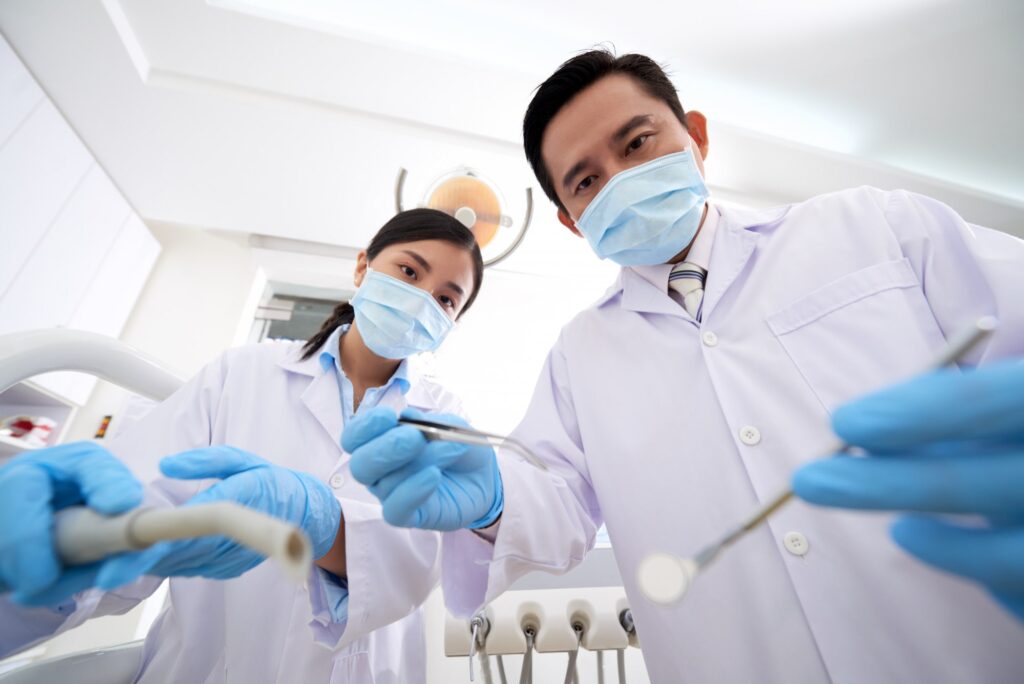
What is gum grafting and in what cases is it used?
- Dentistry
-
Michael
-
Aug 18
- Share post
Home » Blog » What is gum grafting and in what cases is it used?
Gum grafting is a type of oral surgery that is performed to correct the width and thickness of the gums. This surgical procedure is a quick and relatively simple surgical procedure in which the doctor removes healthy tissue from the roof of the mouth or around the teeth and uses it to do a reconstruction. It uses the gum in the place that has receded.
What is the purpose of gum grafting?
Gum recession or gum recession is a process in which the surrounding tissue moves away from the tooth, and as a result, more of the tooth or its root is exposed to damage. The gum recession affects 4-12% of adults. They often don’t realize the problem until it’s severe. This problem makes the teeth sensitive to cold and hot heat. Also, over time, it will destroy the teeth and eventually the surrounding gum tissue will be damaged. For this reason, it is necessary to treat them in the shortest possible time. The best way to solve this problem is gum grafting. Grafting prevents further damage to the gums and repairs previous problems.
Some people also use this method for beauty purposes. Damaged gums affect a person’s appearance. There are different methods to restore the beauty of the gums. Transplantation is done for beauty if it is not possible to repair.
How are types of gum transplant done?
There are different types of gum grafts. The location, extent and severity of the injury, individual needs and doctor’s diagnosis play a key role in determining the type of surgery. Professional doctors explain different methods to the patient and state the advantages and disadvantages of each.
Before starting the gum transplant, the doctor uses a local anesthetic to numb the area. Patients usually do not need general anesthesia. After that, the process of doing each method will be different, which we have discussed below.
- Connective tissue graft:
This is the most common method for treating receding gums. During this procedure, a flap is cut from the skin of the roof of the mouth (palate). Then a tissue called subcutaneous connective tissue is removed from under the flap. In the next step, the doctor transplants the removed graft to the gum tissue around the root and the place of stagnation. Then, the place where the graft is removed and the place where it is placed are closed using absorbable or conventional sutures. Absorbable sutures do not need to be pulled and will disappear by themselves after some time.
- Free gum grafting
Free gum grafting is performed almost the same as connective tissue grafting, and the graft needed for it is taken from the roof of the mouth. But instead of creating a flap, it is directly removed from the tissue of the roof and then attached to the treated gum area. This method is used for people who have thin gums and will need additional tissue for gum grafting.
- Pedicle graft
In this method, gum grafting is performed with the help of surrounding gum tissue. In fact, a part of the adjacent tissue is cut and then the root of the tooth is covered with it. Finally, the doctor stitches the place for repair. This method can only be used in people who have a lot of gum tissue in the vicinity of the teeth. Pedicle grafting is the simplest method of grafting.
What measures are necessary for the recovery of gum transplant surgery?
To improve the condition of the mouth and teeth, you can use appropriate painkillers and sedatives as prescribed by the doctor. Your doctor will give you specific instructions about post-operative care, such as diet, exercise, and medication.
Until the repaired gum area heals, you should not use a toothbrush and floss regularly. Instead, it is better to use suitable mouthwashes to wash the treatment area.
- Usually, the doctor will also prescribe antibiotics to prevent tooth infection. Timely use of antibiotics is very important.
- Diet after gum transplant is another factor that you should pay special attention to. For one to two weeks, the patient’s diet should consist only of soft and fully cooked foods. Consuming dairy products, cooked vegetables, ice cream and other soft foods will help prevent gum damage.
- If you notice unusual symptoms such as excessive bleeding, excessive pain, swelling and bruising, be sure to inform your doctor.
Does the gum graft need to be repeated and followed up?
Gum tissue grafting is used to restore the gums, prevent re-injury and preserve the tooth root. But there is no guarantee that a person will not face gum problems again in the future. Your gums may be lost in the same area or in other areas and need to be repaired. Of course, grafting itself largely prevents further damage. But if proper care is not taken, there is a possibility of the problem occurring again.
But in general, observing the following factors can be effective in preventing damage to the gum tissue.
- Brush your teeth at least twice a day for at least 3 minutes each time.
- Floss daily.
- Use regular mouthwash (no fluoride) once a day to prevent infection.
- Use fluoride mouthwash at least once a week.
- Use a balanced and healthy diet that includes vegetables and fruit.
- Do not smoke.
